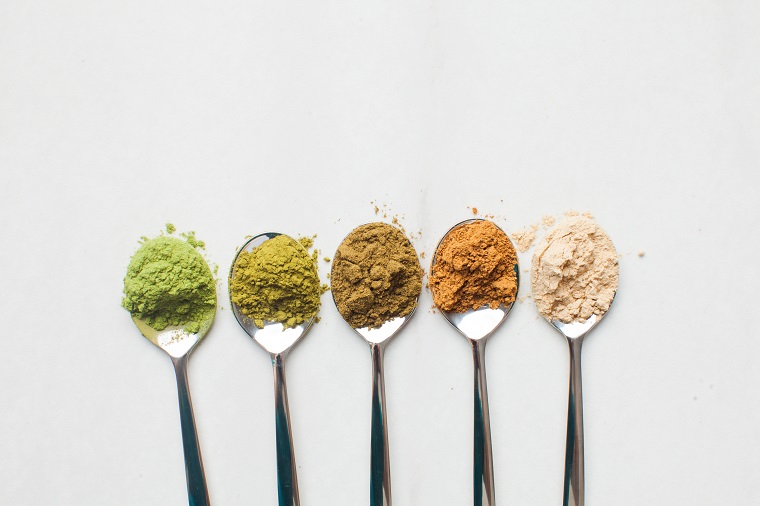What’s Really in your Protein Powder?
By Victoria Sanderson
5 November 2019

Whether you want to “get jacked”, supplement a plant-based diet or enjoy an easy nutritional snack, protein powders and other natural health products (NHPs) provide valuable nutritional benefits. The NHP industry has been rapidly growing in popularity, but have you ever stopped to think about how these products are regulated? PhD candidate Adam Faller from the Department of Integrative Biology did, and his research is now leading the way in development of new and improved quality assurance tools to ensure consumers know what ingredients are in their NHPs.
“I’ve always been interested in natural health products for my own use. It really surprised me that these products are not regulated to the same extent that drugs are, for example,” explains Faller.
An NHP is any product made from naturally occurring substances – most often from a plant – that is used to restore or maintain wellness. Because of their presumably benign nature, regulation of NHP ingredients has been much less vigorous than other health products like prescription drugs.
Protein powders are a prime example. Currently, their protein content is verified indirectly by a chemical analysis that measures the amount of nitrogen present, which represents the total amount of protein. However, nitrogen content can be easily adulterated to falsely increase the apparent protein content of the product. This method also doesn’t verify the identity of individual ingredients, allowing for easy substitution with cheaper alternatives by dishonest suppliers.
“This is a massive oversight by regulatory bodies,” says Faller, noting that some products may be misrepresented, and could even pose health risks for consumers with specific diets or allergies. “We need validated, up to date analytical methods that can mitigate vulnerabilities to food fraud in protein powders.”
Faller is working with Prof. Steven Newmaster, whose lab forms the core of a collaborative research consortium called the Natural Health Product Research Alliance. Working with industry stakeholders from around the world, Faller and Newmaster are on the front lines of developing improved DNA-based tools to verify NHP ingredients.
In theory, DNA can be used to identify material from any organism. But skeptics in the NHP industry previously believed that DNA would be too broken down in NHPs to provide any useful information, and thus were reluctant to pursue molecular techniques. Faller’s early research asked the simple question of whether there is enough DNA available in NHPs for analysis, and whether this DNA is of good enough quality to be amplified (multiplied) to allow it to be properly identified.
Faller addressed the first question by travelling to China and sampling tea leaves directly from the source. He began his investigations with tea because the industry has a relatively simple supply chain, making the ingredients easy to track and follow through each step of processing to a final tea extract product.
“I’m in the middle of China, I have no idea where I am, I’m driving in a car with a group of people who speak little to no English to go collect tea leaves, and I’m thinking: this is pretty cool…this is being a scientist,” recalls Faller.

for analysis.
Faller’s efforts paid off – he was able to detect usable DNA in green tea extract. Once he had confirmed that DNA of sufficient quality and quantity could be found in a highly processed product like tea extract, he moved on to assess the rapidly growing market of plant-based protein powders. He wanted to know if DNA-based methods could identify not only the expected ingredients, but potential adulterants as well.
Faller set about comparing three different techniques. The first tool was targeted PCR which amplifies (multiplies) certain regions of DNA so they can identified. This technique is highly efficient and targeted; however, you have to know beforehand exactly which ingredients you want to look for in the product. The second technique was next generation sequencing, a more universal technique that amplifies and identifies the DNA of every ingredient present. The results of this technique can be challenging to interpret, as the results do not necessarily correspond to the concentration of a particular ingredient, making it hard to differentiate minor and major contaminants. The third technique was a process called liquid chromatography with tandem mass spectrometry, which involves identifying the types of protein that are present, rather than DNA. Although this technique directly tests protein content, which is helpful, it sometimes misses ingredients that can be identified through DNA analysis. In short, each technique had its own unique advantages and drawbacks, and some worked better than others depending on the ingredient being analyzed.
In the end, Faller concluded that the best way to verify protein powder ingredients is on a case-by-case basis, where the analytical method (or methods) are selected based on a product’s specific composition. Ultimately, quality assurance for protein products may be a two step process, where cheaper techniques can serve as an initial screen, and expensive techniques are then used to resolve any ambiguous identifications.
Faller’s findings mark his fifth publication since beginning a PhD in molecular authentication of NHPs, and have firmly established DNA-based tools as a game-changer in the NHP industry.
“We’re really at the forefront of a rapidly moving field. A portion of the NHP industry doesn’t yet know how to adopt DNA techniques, but they are keen to, so we have a lot of work to do,” says Faller.
Read the full study in the Scientific Reports.
Read about other CBS Research Highlights.